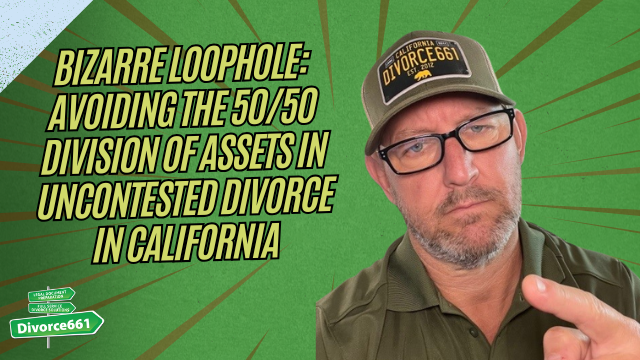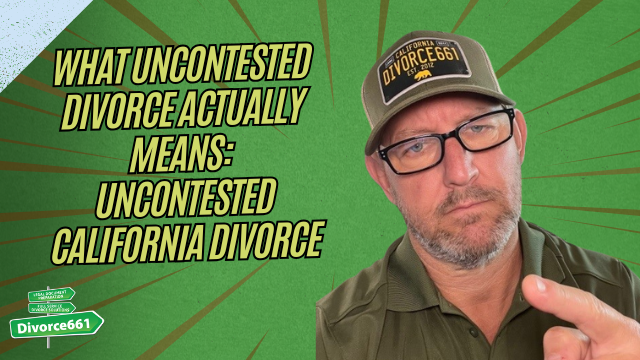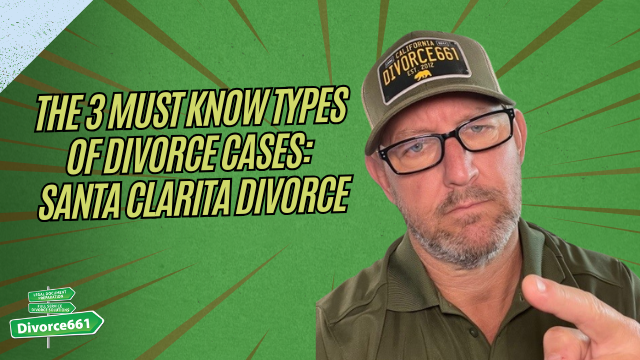💎 BIZARRE LOOPHOLE: Avoiding the 50/50 Division of Assets in Uncontested Divorce in California
Divorce often brings up many complex questions about how assets and debts are divided between spouses. In California, the general expectation is a 50/50 split of community property. However, there’s a lesser-known aspect that many people overlook: the court will not interfere if both parties agree on a different division. This insight comes from Tim Blankenship of Divorce661, an expert in California divorce law, who sheds light on how couples can avoid an equal split by reaching mutual agreements.
Understanding Asset Division in California Divorce
California is a community property state, meaning that assets and debts acquired during the marriage are typically divided equally between spouses upon divorce. This 50/50 division is the default legal position, designed to ensure fairness. However, this division is not absolute.
Tim Blankenship points out an important nuance: “The court will not interfere with your decision-making ability if you agree on it.” This means that if both spouses come to a mutual agreement on how to divide assets and debts—whether that means a different split or a creative arrangement—the court generally respects and enforces that agreement.
Why Do Most Divorce Cases Not End With an Equal Division?
In the majority of divorce cases handled by Tim Blankenship, clients do not end up with an equal division of assets and debts. This is because uncontested divorces often involve negotiation and compromise. Couples who collaborate or work through mediation can tailor their settlements to fit their unique financial situations and personal priorities.
- Flexibility: Couples might decide that one party keeps certain assets while the other takes on more debt, balancing the overall value.
- Personal Preferences: One spouse might want to keep the family home, while the other prefers to take retirement accounts or other investments.
- Efficiency: Avoiding court battles by agreeing on asset division saves time, money, and emotional stress.
The Power of Agreement in Uncontested Divorces
When both spouses are on the same page, they can utilize this “bizarre loophole” to avoid the rigid 50/50 split. This is especially common in uncontested divorces where both parties want to expedite the process and minimize conflict.
By drafting a clear agreement about who gets what, the couple can present this to the court for approval. Since the court’s role is to ensure fairness and legality, it will generally honor agreements that are voluntarily made and do not violate the law.
Tips for Successfully Negotiating Asset Division
- Be Transparent: Full disclosure of all assets and debts is essential for a fair agreement.
- Communicate Openly: Discuss your priorities and concerns honestly with your spouse.
- Seek Professional Help: Consider mediation or legal advice to assist in drafting agreements that are clear and enforceable.
- Document Everything: Put your agreement in writing and have it reviewed by an attorney to avoid future disputes.
Conclusion
Dividing assets and debts during a California divorce doesn’t always mean a strict 50/50 split. Thanks to the flexibility allowed in uncontested divorces, spouses can agree on a division that better suits their individual circumstances. As Tim Blankenship explains, the court respects these agreements as long as both parties consent. This approach not only avoids unnecessary legal battles but also creates a smoother, more personalized divorce process.
If you are navigating a divorce in California, understanding this “bizarre loophole” could save you time, money, and stress. Always aim to reach a fair and mutually acceptable agreement with your spouse, and consult a qualified professional to guide you through the process.



